Story by Will Silk and photos by Richard Parramint

Work began on the Type 79 program, which was to be a true wing car in that it would effectively make the most use out of the air passing between the car’s underside and the surface of the track. The project was given to Martin Ogilvie, with Peter Wright advising on the aerodynamics and Colin Chapman having a strong input on the program as things progressed. Ogilvie constructed a monocoque tub of sheet aluminum with a honeycomb floor. Unlike its predecessor, the Type 78, the Type 79 was designed from the outset to be narrow, with removable side pods, unlike that on the T78. The side pods were to do a variety of tasks, as the right side pod housed the radiator, while the left side pod was constructed to hold the oil cooler.
The biggest job for the side pods was to assist in producing down force via the air moving above and below the pods. In order to achieve full capitalization of the air moving under the car, the sides of the car had to seal the air under it forcing the air to travel from the front to the rear. This was accomplished by using what became known as the “board in a box”, or skirts. While a variety of skirts were tried on the Lotus Type 78, the “board in a box” skirts employed on the Type 79 were deemed to be the most effective style of skirt to be used.
The Lotus Type 79 used a complex assembly of building a hollow channel into the outer part of the side pods and then sliding in a carbon-honeycomb skirt that utilized rollers in order for it to move vertically inside the channel. A spring mechanism was constructed in order to help hold the skirt in place along the ground, but suspend the carbon-honeycomb piece enough to allow it some movement while rubbing the surface. A rubbing strip was placed at the bottom of the skirt to take the brunt of the friction while traveling along the track’s surface. This effectively sealed the air off, and produced a defined channel underneath the Type 79 to assist the car in the production of down force.
The 34-gallon fuel tank for the T79 was situated immediately aft of the cockpit, which led to a rather cramped seating area for the pilot, especially on T79/1, the first car constructed which was built with a low front scuttle so that a safety roll hoop could be implemented on top of the scuttle just ahead of the gauges. The cockpit was also tremendously narrow in terms of leg room, with the front shock and coil spring units being mounted vertically on either side of the driver’s legs. These pieces were linked to fabricated upper wishbones which led out to the uprights, with tubular pieces connecting the bottom of the upright to the chassis.
The brakes on a T79 are interesting in that the front brakes consisted of two Lockheed brake calipers, one on the leading side of the rotor, the other to the aft of the disc. The T79’s rear brakes were mounted inboard on the gearbox, the calipers being cast into the gearbox housing side plate and made from magnesium. It was the choice of magnesium in the construction of this component which would ultimately give T79 pilots a fit, since the magnesium castings would become porous during a race and with the heat, begin to give the driver a soft brake pedal requiring the driver to rapidly pump up the brakes while in the thick of on track action. Later T79s would resort to using outboard rear brakes which ultimately aided the ground effect concept behind the entire theory of the car by getting the rear brakes out of the path of air that was travelling under the car.
The Cosworth DFV engine was the heart of this revolutionary car, as it had become the motor of choice throughout the Formula One paddock in the middle-to-late 1970s. The 3.0 liter unit that Lotus used in the T79 were prepared by Cosworth, Nicholson Racing Engines, Swindon Racing Engines, and Euroracing Engines. While most would think that the best DFVs would come straight from Cosworth itself, the definition of “best” would have to be clearly defined, as Cosworth was always tweaking and developing the small V-8 to improve on the 450 horsepower output at 9,500rpm, sometimes ending in a poof of smoke while in the heat of battle.
The first choice of gearboxes for the T79 was nearly as revolutionary as the car at first glance. Insisting on a sequential shift box, Colin Chapman directed Tony Rudd and Brian Spooner to revive the “queerbox” as it was known when first used in the late 1950s on the Lotus 15 sports racer, as well as the Type 16 formula car. In effect, it was a small, compact gearbox similar in concept to what the Messerschmitt Company used on their small bubble car just after the Second World War. Getrag, the company that made the transmission for Messerschmitt in the 1940s, was recruited to assist in making the new Lotus-Getrag box. The Lotus-Getrag box proved troublesome, and was replaced by mid-season with the more conventional Hewland FG400.
Lotus would debut the T79 in England at Silverstone’s non-championship Daily Express International Trophy Race on 19 March 1978. The debut was to be short, as Andretti would exit the rain soaked race on lap 3, damaging the car fairly significantly. This would lead to the official championship debut to be postponed until the Belgian round of the championship held at Zolder in late May. It would be at Zolder that Andretti would drive the repaired T79/2 to victory, with teammate Ronnie Peterson coming home second in a Lotus T78. A few weeks later, in Jarama, the duo of Andretti and Peterson would again finish one-two, this time both piloting T79s. This would happen again at France, racing on the Paul Ricard circuit.
Andretti would take the top spot on the podium at Hockenheim’s German Grand Prix in T79/3, the third T79 to be built. Ronnie would score his first victory with a T79 two weeks later in Austria piloting T79/2. The Dutch Grand Prix at Zandvoort would once again see a Lotus sweep of the top two podium spots. Monza however, would be one of the less glorious moments in the history of the T79, with a chaotic first lap crash that ultimately took the life of Ronnie Peterson.
While still coming to grips with the loss of their teammate, the Hethel-based outfit set off to America for the U.S. Grand Prix East at Watkins Glen. Jean-Pierre Jarier was recruited from the ATS squad to drive the team’s second T79 that weekend, bringing home a 15th place finish, while Mario was forced to retire with engine trouble. The last round in Montreal, Canada saw Andretti wrap the season up with a 10th place finish, while Jarier drove a stunning race once again, having placed his T79 on pole and then dominated the race in superb fashion until an oil leak would force him to retire. Despite the two North American rounds outcomes not being quite in tune to what the team was use to experiencing, Andretti walked away with the driver’s World Championship for 1978, thirteen points ahead of Ronnie Peterson, and sixteen points clear of Reutemann in third. The Lotus Type 79 proved instrumental in also capturing the Constructor’s World Championship for Lotus that year.
With Reutemann moving over from Ferrari and with Andretti staying onboard, Team Lotus looked set for utter domination in 1979. The rest of the grid was rapidly catching up with the ability to harness the power of ground effect to pull the car to the earth. Harvey Postlethwaite’s Wolf WR5 was the only car really close to the T79 in 1978, but the arrival of the Williams FW07 in 1979 saw many of the complexities of the T79 put to use in a simpler manner, and indeed turned out to be a very challenging car to race against that year. To combat the competition in 1979, Lotus had constructed the Type 80, but by the time the French Grand Prix came about in July, Andretti had endured enough of the new car’s shortcomings and returned to running a T79 for the rest of the season. Reutemann and Andretti only managed a few podiums between the two of them, resulting in Lotus falling back to fourth on the constructor’s championship table for the 1979 season. The T79 was then retired for a new series of cars to take the marque into the decade of the 1980s.
Lotus T79/1 Restoration
This brings the tale of Lotus Type 79 into the 21st century. Early in 2010; Paul Rego, an avid Lotus enthusiast and owner of two Lotus 23Bs, got word from Lee Chapman of Lee Chapman Racing in New Milford, Connecticut that Lotus Type 79/1 was available for purchase. Lee helped place Paul Rego in contact with Joel Finn who owned the classic Lotus F1 machine and had done some vintage racing with the car. Paul was able to strike a deal for the black and gold artifact, knowing fully that a restoration was going to have to be immediately undertaken.
Once the car was purchased, it was moved to Paul’s racing firm in Dallas, Texas. Known as Regogo Racing, the staff supports a number of classic Lotus race machines and retains the services of Doc Bundy, a former IMSA GTP and Trans Am ace, to handle some of the driving duties. Chris Dinnage was placed in charge of the restoration of T79/1 and immediately set about stripping the car down in order to crate the car up for its journey to England.
Once the car was stripped and crated, T79/1 departed for Classic Team Lotus in Norwich, UK where the car was reunited with its spiritual home and placed in the hands of Colin’s son, Clive Chapman, who runs the operation at Classic Team Lotus.
While at the Classic Team Lotus facility in northern England, the Martin Ogilvie-designed aluminum tub was completely stripped and repaired before undergoing crack testing, which it passed in the latter part of December, 2010. The Cosworth DFV was sent to Phil Reilly’s shop in Corte Madera, California for a full race rebuild based on a recommendation by Don Hoevel. As progress continues to be made daily with the restoration tasks in the UK, Regogo Racing currently awaits the return of T79/1 to their facility in Dallas, Texas so that work on reassembling the car can begin in hopes of having it racing at the Barber Motorsports Park round of Bobby Rahal’s Legends of Motorsports series in May, 2011.
The Lotus T79 changed the face of Formula One, as well as virtually all of racing, with its harnessing of the air under the car to create down force. The significance of having this car, the first of five to be constructed, returned to the track so that young fans of Formula 1 can see it in action and think about how the car single-handedly transformed the sport is perhaps one of the greatest events of the upcoming 2011 vintage racing season.
Lotus 79 Restoration Photo Gallery (click image for larger picture)
[Source: photo credit: Richard Parramint]



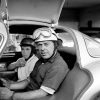
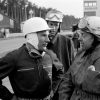
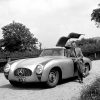
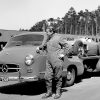
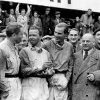
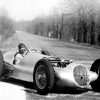

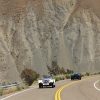
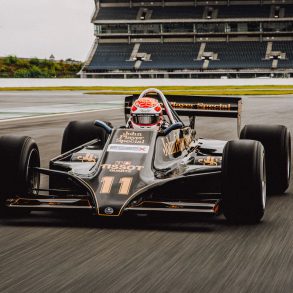

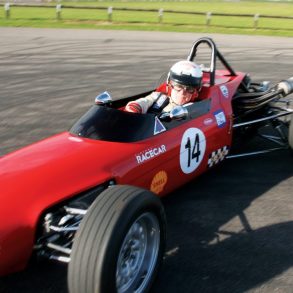




DURING THE MONZA’S GRAND PRIX, RONNIE PETERSON WAS ON-BOARD OF A 78 TYPE AND NOT ON 79.
True, indeed Ronnie was in a T78, however the shunt does cloud the history of the T79, as Mario was piloting a T79 that day.
I disagree – what Mario was driving that day is irrelevant. The fact is that Ronnie’s T car, which he was obliged to qualify and race in after shunting his 79, was a 78, and it was at the wheel of this that he sustained the injuries that ultimately led to his death.
It has always seemed to me that if Ronnie had been given the use of Mario’s spare 79 then he would almost certainly have qualified higher than the 3rd row and would probably not have become embroiled in the start-line accident.
He was too tall for Mario’s car.
Great story, Will! I wondered about where these cars were, as I saw them at the Glen in ’78, which remains one of my favorite (albeit wet) weekends in upstate NY.
The sights, the sounds, and the odor of GP cars at a race – unforgettable. Don’t you just love the smell of high octane in the morning? I hope to see one of these cars on a track again soon! Keep us updated.
Hi Ronald,
Thanks for the nice comment. To see the Lotus 79 mentioned race, as well as other significant F1 cars of the time period, keep an eye on the Historic Grand Prix site schedule ( http://www.historicgrandprix.com/schedule.htm )
for more information.
There is also a rumor circulating that there will be some sort of reunion in England for Lotus T79s chassis 1-4, the fifth believed to now be in Japan.
I was at Road America this past July when Paul Rego Took delivery of this car.
I believe it was the Friday of the Historic Can-An week end.
I did take a few pics of it.
Awesome
Jarier may have been classified 15th at the Glen, but that doesn’t tell half the story. Although he officially qualified 8th, Lotus had clocked his best time as being much faster than the one he was credited with by the time-keepers. On lap 3 of the race, he pulled in to have his front left tyre replaced, dropping him to last place. The remainder of his race demonstrated the brilliance that lay within him (but was all too often untapped) as he charged his way back to third place, setting fastest lap in a time that was within a whisker of that which Lotus said he had achieved in qualifying. For a time, second place looked to be within his grasp but his usual misfortune intervened and he ran out of fuel four laps from the end.